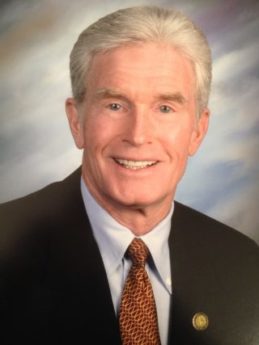HOME | ABOUT US | MEDIA KIT | CONTACT US | INQUIRE
HOME | ABOUT US | MEDIA KIT | CONTACT US | INQUIRE
April 2021
 Most February economic data, released in March, was weaker than expected, probably because economists were more focused on stimulus checks than the weather. But considering how much of the country was affected by extreme cold and storms in February there’s little doubt that impacted manufacturing, shipping, and even shopping. A big part of Texas lost power for a full week, a quarter of February. It’s a good bet the most weather-affected parts of the economy will rebound in March, and as a result, estimates of first quarter GDP growth should have risen over the course of last month. After a year with traders’ attention focused on pandemic effects, economic fundamentals matter again.
Most February economic data, released in March, was weaker than expected, probably because economists were more focused on stimulus checks than the weather. But considering how much of the country was affected by extreme cold and storms in February there’s little doubt that impacted manufacturing, shipping, and even shopping. A big part of Texas lost power for a full week, a quarter of February. It’s a good bet the most weather-affected parts of the economy will rebound in March, and as a result, estimates of first quarter GDP growth should have risen over the course of last month. After a year with traders’ attention focused on pandemic effects, economic fundamentals matter again.
Listening to Chair Powell this past week it’s clear the Fed thinks it has the forecast all figured out. The important bits anyway. Traders and economists are not so sure. The biggest differences between the Fed’s comfort in the outlook and the markets’ uncertainty stems from the fact some pretty extensive details simply don’t matter to the Fed; however, they matter a lot to markets.
How much stimulus impacts the economy this year and in the future is just one question affecting the interest rate outlook. How much is spent, and how quickly, matters too. Economists can guess, but ongoing “over the top” legislative efforts add another layer of uncertainty on top of the lack of precedent for the current economic environment.
Fortunately, the economy continues reopening. There is more than enough money in consumer hands to ensure continued economic expansion; and, thanks to vaccines, future COVID setbacks should be less concerning. Meanwhile, GDP is on the cusp of crossing above potential GDP. The Fed is committed to inflation fighting in this economic cycle, which means the FOMC will be content to wait and see how things play out before making any important policy decisions. There is still significant uncertainty about the mix of real growth and inflation in the near, medium, and long term. So, it remains imperative to watch the data.
The Fed is not even sweating the relatively small stuff at the moment. FOMC participants agree monetary policy is optimally positioned to achieve the Fed’s sole 2021 priority — returning to maximum employment as quickly as possible — which means wait-and-see is the right choice at individual Fed meetings more often than not.
The next few months are critical for interest rates on three fronts. First, consumers’ eagerness to spend despite capacity constraints will generate short-term inflation. Second, Washington’s ability to affect the economy is generally elevated in the first months of single-party rule, before an inevitable loss of momentum. And third, the Fed is very much on hold until the economy is in touching distance of maximum employment, which the Fed thinks will come when the unemployment rate falls to 4%.
Upcoming April releases will likely boost rates, as it is should push Q1-21 GDP expectations back up from 5% toward 10%. How far yields rise depends on how much growth forecasts rise, and maybe more importantly, how much inflation is revealed.
Over the past 40 years, the Fed made inflation its top priority. As the FOMC’s faith in its ability to contain inflation grew, the Fed’s inflation policy evolved until it was generally understood by the market that the Fed would never allow inflation to exceed 2%. This was never the Fed’s actual policy, of course, but it was nevertheless perceived as reality by The Street. The practical implication is that the Fed wants real interest rates to rise over time. One way they are achieving that is by undermining the markets’ faith that inflation will never exceed 2%. When investors can take for granted that inflation will always be contained, they can afford to miss a few economic releases. However, with today’s extreme government spending and questionable decisions, how will confidence be maintained?